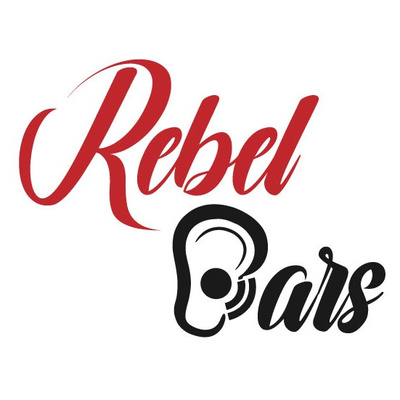Blog
Why Your Mind-blowing Vocal Chain is Your Best Audio Weapon
Working with vocals in music production has never been an easy task, as it requires loads of processing and treatment before the vocals can be recorded to fit properly into the tracks. The vocal treatment required varies according to the style and genre of the project. There are different stages that make recording vocals effective and easy, and one of those is the Vocal Chain, which we will focus on in this article. This article will explain vocal chains and their importance, the components of a vocal chain, the differences between analog and digital vocal chains, the examples of common gear/plugins that are used for vocal chains, and we will finally explain the 500 series.
Let’s get right into it.
What is a Vocal Chain?
A vocal chain in simple terms, is a chain of effects that are used to develop vocals in audio production. Developing vocal chains actually involve making them fit with other elements of the track during production. A vocal chain is a combination of direct and indirect processing methods used in audio production. This is why some of the effects that are used in developing the vocals are usually connected by inserting them directly on the vocal track (input track) or by placing them on the return channels, before they are eventually sent over to the vocal channel.
Although there are DAWs that come with presets or templates that are designed to refine vocals, one still needs to find the right effect that is suitable to the individual’s vocals. Doing this may likely involve a lot of “trial and error”, but it cannot be left to chance if one intends to achieve perfectly sounding vocals for the client.
There are no hard and fast rules to using vocal chains, however it is important to note that tracking vocals with a chain that has one too many compressors on it may inhibit the artist’s dynamic and emotional approach to their performance. If the reverb levels are not optimum, they could sound tunneled or even too spaced out. When building your vocal chain be sure to pay attention to the type AND order of the effects that you use. Spend time finding the perfect settings/parameters for your individual effects, this will be key in finding YOUR perfect vocal chain. It is most imperative for the audio engineer to understand that when developing templates for a vocalist, they should focus on what is efficient rather than what is simple.
Components of Vocal Chain
A typical vocal chain has several components, but the combinations varies among producers/engineers. Some components may be tied to one specific function while others may have more than one function, but they are all very useful in audio processing. They include:
- PreAmp: Usually the first and most important part of a vocal chain. A Preamp detects and controls the input signal (gain). They can shape the initial vocal signal, and some even contain EQs, compressors, and noise gates.
- Noise Gate – This is used to eliminate noise or light hums.
- Low Pass Filter – This is used to cut out unwanted low frequencies.
- Equalizer: Equalizers are used to balance the tone by boosting or cutting frequencies. It is the most often used tool in a vocal chain processing. It is also used to make vocals sound best in a production.
- Compressor: The compressor is used to ease out volume imbalance, to tame dynamics, and also to add more dynamics that will enhance the production.
- De-esser: The De-essers performs the function of compressing sibilance in the vocal i.e., it helps to isolate the frequency or frequencies where the sibilance is loud and then, it turns them down.
- Pitch Correction – Pitch correction works for tonal vocal sounds, and to even pitch inconsistencies. With the use of plugins or tools like Antares Auto tune and Melodyne, auto correction can be used to change the intonation of an audio signal in order to achieve equal tempered note.
In certain scenarios you may use or see a vocal chain also with time based effects such as reverbs, delays, etc. While there are no actual rules, it is common to start the vocal chain with a low pass filter/roll off; most mics are equipped with them also. You have to first get rid of unnecessary low frequencies before passing the signal onto any processor. Why should you do this? The answer is simple – unnecessary low frequencies often have negative impacts on the clarity of vocals and on the effect processors.
You also need to ensure that the noise gate is properly set to leave no allowance for noise. Noise will cause damage to the audio production process and will rubbish your best efforts to enhance the sound. If you apply compression to any sound without eradicating the noise first, the compressor will also compress the noise and this will make it bigger and louder. It is common practice for audio engineers to use the low pass before the noise gate. With this, they are assured that the noise will be fully eradicated.
In any vocal chain process, it is important to note that corrective effects must be used before creative ones. Nobody applies makeup before taking a proper bath and this is why the sound has to be correct and balanced before you apply effects to enhance it.
Are there precautions? Certainly, and one of those precautions is the prevention of over processing. To prevent this, a sparse or minimal vocal chain is advised and processing should only commence during recording. Another thing to assure is that you route (or order) your chain the correct way, which is: microphone, mic preamp, audio interface/mixer, send to effects, return to mixer, and CPU. In some cases, you may use signal chains for processing but this depends on the style of music, and the most common route/order is EQ, compressor, auto tune, route to aux, De-esser, compressor, send to fx reverb and delays.
Digital VS. Analog Vocal Chain
The differences between digital and analog vocal chains can be implied from their names. Analog vocal chain is applied to mixing consoles with outboard or hardware gears, microphone into a mic preamp, then to a compressor, eq and then a reverb before recording. A digital vocal chain on the other hand is set to work in the box with the DAWs and plugins connected from a computer. You can build your digital vocal chain through your interface (most common is Apollo) or insert the plugins right onto your recording track in your DAW.
Common Plugins Used for Vocal Chain
Plugins are third party applications that are installed to equip an application with capabilities that it does not possess ordinarily. Plugins are common tools used in vocal chain processes. The following are common plugins used for vocal chain effect:
- FabFilter Pro-DS
- Antares Auto-Tune Pro
- Celemony Melodyne 5 Editor
- Helios Type 69
- CLA-2A
- Waves Vocal Bundle
- Renaissance Vox Comp
- SSL G-Channel
- Neve 1073
- API 550/560
- Puigtec EQs
- Teletronix LA-2A
- Avalon VT-737
- CLA-76
- Neve 1084
500 Series Portable Studio Equipment
Have you heard about the 500 Series portable studio equipment? It is an interesting series but so much is not known about it. The 500 Series equipment stands out in many ways especially for its exceptional recording quality and even more so its mobility. Most components are also relatively cheap, but hold much more value than other expensive recording equipment.
The 500 Series equipment is audio equipment designed after an analog format that has been existing since the 70s. The history surrounding the 500 Series equipment may be very boring to you but they work in a very simple but highly effective way.
The 500 Series equipment typically houses an individual module which is connected to a rack which serves as its power source. The power source can then support more than one module and will provide an input and output channels for audio from each module especially those ones with similar dimensions. Each insert can also hold singular channel effects (analog) such as preamps, compressors, EQs, reverbs, etc.
What makes 500 Series portable studio equipment outstanding?
The 500 Series portable studio can be customized to suit individual needs. In fact, most audio engineers combine them with other audio equipment and this gives them the freedom to set their studio designs according to their needs rather than around a console. The 500 Series portable studio delivers flexibility without any compromise on quality. You can literally unplug them and go, how cool is that?! The 500 Series makes the perfect professional studio on the go, just ask the pros.The 500 Series equipment has a lot more benefits attached to them, but all of these benefits cannot be clearly articulated here. To know more about the benefits, the VPR Alliance released by API is a guide that explains all of the tiny details about the specifics considered in the design and operation of 500 series equipment.
Again you all, I hope you enjoyed another reading brought to you by Rebelears. It is always a pleasure to have you stop by. Thank you for your support!
For more blogs, podcasts and other tips please visit rebelears.com and don’t forget to check out our free downloads and products for purchase. Thank you,Until next time… REFUSE TO SOUND ORDINARY!

